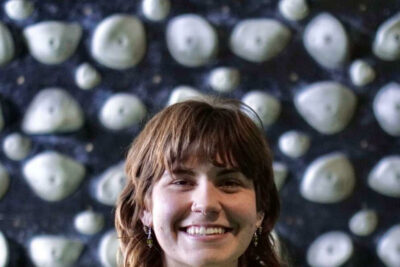The Public History class investigates Goshen houses
A new history course entitled Public History began this spring semester for ten history majors.In the past three or four years, the History Department has noticed that some students were interested in museum work and archiving as a career.
“We have students go through our history program and then two or three years later, they write back to us and tell us that they decided to go back to school for museum science or historical preservation,” said Jan Shetler, professor of history.
In response, the department designed a few classes around the field of public history; they thought it was important for students to begin thinking about a career while they are still in school.
The course is co-taught by Shetler, who has had background in the public history field, and Colleen McFarland, who works with the Mennonite Historical Archives.
The course shows the nonacademic side of history, with a focus on introducing the field. The class spends time looking at museums, libraries, archives and websites to understand the basic ways to educate outside of an academic setting.
Two large projects accompany the other coursework and discussion. The first focuses on house histories. The class spent the first part of the semester researching assigned homes in Goshen’s Historic District — specifically on South 7th Street and East Lincoln Street.
Students were asked to research who owned the house, who lived there, any changes to the property since its original construction, the architectural style of the home, and any other relevant information.
A majority of the research was outside of class. Students had to visit Elkhart County Historical Museum (ECHM) in Bristol to look through directories, the County’s auditor’s office and archive collection, the local library, and even “ancestry.com” for some last minute information.
“It’s kind of like detective work,” said Shetler. “It can be really frustrating, but when you find something it’s so rewarding. There are some really interesting stories.”
Most of the homes had once been single-family homes and are now apartments. Some homes were renovated into apartments around the time of the Great Depression, others during a housing shortage following World War II, and still others because of an increase in immigrant population in the 1990s.
During the next few weeks, the class will tackle their second project, which will vary depending on the person. Some will create an exhibit proposal — a documentation project, which will organize the information they find on their homes, and an opportunity to do a performing arts project.
